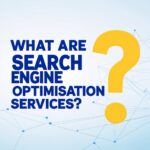In the constantly evolving landscape of SEO, keyword intent is perhaps the most crucial consideration for crafting content that appeals to both users and search engines. Whether you’re a marketer, business owner, or content writer, targeting your audience’s search intent can enhance your rankings and improve user experience. Here’s an explanation of what keyword intent is, what the various types are, and how you can leverage it to optimize your website content.
WHAT IS KEYWORD INTENT?
When a user enters a question into a search engine, they’re seeking particular answers or solutions. Knowing this intent enables you to craft your content to fulfill the precise needs of your audience.
For example, when a user searches for “best running shoes,” their intent is likely to be purchasing. On the other hand, if someone searches for “how to choose running shoes,” their purpose is more informational.
TYPES OF SEARCH INTENT:
INFORMATIONAL, COMMERCIAL, TRANSITIONAL, AND NAVIGATIONAL
When optimizing for user intent, it’s essential to understand the different types of search intent that guide users’ decisions. Let’s break them down:
INFORMATIONAL INTENT
This is when customers search for information. They want to know something, but might not necessarily have the intent to buy.
Examples include:
“How to increase SEO rankings”
“What is keyword intent?”
COMMERCIAL INTENT
Commercial intent users are at the consideration stage of the buying process. They are weighing their options but haven’t finalized their purchase.
Examples include:
“Best SEO tools for beginners”
“Top 10 smartphones less than $500”
TRANSACTIONAL INTENT
These users are prepared to make a purchase or take a specific action.
Some examples are:
“Buy iPhone 13 online”
“Subscribe to SEO tools plan”
NAVIGATIONAL INTENT
Navigational intent occurs when the user attempts to access a specific website or page.
For instance:
“Facebook login page”
“Amazon homepage”
HOW TO ANALYZE SEARCH INTENT IN SEO
To properly analyze search intent, use a combination of tooling and manual approaches. Here’s how you can get started:
KEYWORD RESEARCH TOOLS
Utilize tools such as Google Keyword Planner, KWFinder, or SEMrush to obtain a list of possible keywords. The tools also provide helpful information on search volume and competition for every keyword.
- Examine SERP Features
- Check the search engine results page (SERP) of your chosen keywords.
- Observe what kind of content is displayed, be it blog posts, product listings, or news articles. This will give you a rough idea of what Google thinks the search intent of the query is.
- Analyze Competitor Content. Look at what competitors are doing. If they are ranking for a keyword, know why their content is appealing to search engines and users. This might be due to the proper utilization of headings, images, and SEO techniques.
SEARCH INTENT IN THE MARKETING FUNNEL
Search intent is key in the marketing funnel, as it allows you to personalize your content based on where a prospective customer stands.
The following illustrates how various search intent categories align with the funnel:
TOP OF THE FUNNEL(TOFU):
Informational pieces such as blog articles, guides, and how-to tutorials.
MIDDLE OF THE FUNNEL (MOFU):
Commercial pieces, such as comparison articles and case studies, help users consider their options.
BOTTOM OF THE FUNNEL (BOFU)
Transactional content such as product pages, sales pages, and subscription offers.
By mapping content to the types of search intent, you can guide users through the funnel, providing them with the information they need at every stage of their journey.
TOOLS TO FILTER KEYWORDS BY SEARCH INTENT
Several tools are available to help you filter keywords based on search intent. These tools sort out keywords by type, enabling you to reach the right audience at the right moment.
Some of the most popular tools include:
KWFinder: Offers keyword suggestions with the ability to filter by search intent.
Ahrefs: Features a comprehensive keyword analysis tool that enables the determination of user intent behind different search terms.
SEMrush identifies search intent by categorizing keywords into three main types: informational, commercial, and transactional.
These tools will enable you to understand the user intent behind your keywords better and produce content that meets their expectations.
OPTIMIZING CONTENT FOR SEARCH INTENT: EXAMPLES
To properly optimize your content for keyword intent, it is essential to organize it by user expectations. Some examples of search intent optimization are as follows:
INFORMATIONAL:
For the information-seeking user, create in-depth blog posts or guides that provide comprehensive solutions to their questions. For instance, “How to Select the Most Suitable Running Shoes for Your Feet” would be optimized with titles, bullet points, and internal linking to other relevant content.
COMMERCIAL
For product comparison users, design comparison pages or lists emphasizing the advantages of each alternative. Example: “Top 10 SEO Tools for 2025 – Features, Pricing, and Reviews.”
TRANSACTIONAL:
If you aim to make a conversion, design product pages with explicit calls to action, prices, and user reviews. Example: “Buy the Best Running Shoes Today – Free Shipping Included.”
Optimize your website’s navigation to ensure it’s easy for users to find specific pages, such as product listings or login portals.
FAQ: KEYWORD INTENT AND SEO
Q1: What’s the difference between search intent and user intent?
Search intent and user intent are sometimes confused with one another, but they both describe the motivation behind a search query. Search intent generally refers to the overall purpose behind the search, whereas user intent considers the specific needs or behaviors of the user.
Q2: How does knowing search intent influence my SEO?
Once you grasp search intent, you can write content specifically answering what people are seeking, which will boost your chances of ranking higher and giving users a better experience.
Q3: Is it possible for tools to assist in filtering keywords by search intent?
Yes! Tools such as KWFinder and SEMrush can help filter and group keywords by intent, allowing you to create targeted content that resonates with your audience’s needs.
Q4: What are the 3 C’s of search intent?
The 3 Cs of search intent are content, context, and customer. Here’s what that means: “Content” examines what users are searching for, including specific keywords, topics, and query formats.
Q 5: What are the nine types of keywords in SEO?
There are nine types of keywords: short-tail, long-tail, short-term, long-term, product-defining, customer-defining, geo-targeting, intent-targeting, and intent-targeting. All of these keywords have their unique strengths that can amplify your SEO efforts when used in different situations.
Q 6: What are the three phases of search?
Includes: The Discovery Phase (Crawling), The Storing Phase (Indexing), and The Serving Phase (Ranking).
Q 7. What are the techniques of intent recognition?
Intent recognition technology relies on various natural language processing and machine learning algorithms, mainly divided into several steps: data collection and preprocessing, feature extraction, model training, intent classification, and slot filling
CONCLUSION: LEVERAGE THE POWER OF KEYWORD INTENT
Adding keyword intent to your SEO plan is perhaps the best way to ensure your content aligns with user expectations. With knowledge of search intent types and the proper tools, you can develop content that resonates with your audience throughout their journey. So, begin evaluating search intent today and make your content more visible and engaging!
CTA: READY TO OPTIMIZE YOUR CONTENT?
Take the first step by checking out KWFinder or SEMrush to identify your target keywords and understand their intent. Match your content accordingly and watch your rankings shoot through the roof! If you require expert SEO assistance, contact us today!
 Real Estate / Property
Real Estate / Property  Vehicles
Vehicles  Bikes
Bikes  Mobiles & Tablets
Mobiles & Tablets  Electronics
Electronics  Furniture & Home Decor
Furniture & Home Decor  Fashion & Beauty
Fashion & Beauty  Jobs
Jobs  Services
Services  Pets / Animals
Pets / Animals  Books, Sports & Hobbies
Books, Sports & Hobbies  Kids
Kids  Business, Industrial & Agriculture
Business, Industrial & Agriculture 





